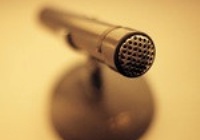
FCC Issues New Rules For Wireless Microphones
At its Open Meeting on August 6, 2015, the FCC ruled on several proceedings that affect the current and future operations of wireless microphones used in the performing arts. Currently, there is no change to wireless microphone operations. Users can still register their needs in the database, subject to the 30-day comment period. However, once the Office of Management and Budget approves the FCC’s new rules, likely in late 2015, there will be a more distinct difference between the treatment of licensed and unlicensed wireless microphones.
The FCC’s new rules state that entities regularly using 50 or more wireless devices are eligible to apply for a license. Entities using fewer than 50 wireless devices are not eligible to apply for a license. As of July 2016, unlicensed wireless microphones in the 600 MHz band will have to register their frequencies in the database and may have to pay a registration fee. This registration does not provide interference protection, and it does not reserve channels. Effective between July 2016 and April 2017, unlicensed wireless microphones operating on any frequency will no longer be able to reserve channels protected from White Space Devices.
At the August meeting, the Commission also began the process of moving wireless microphones to new spectrum following the 2016 spectrum auction. The official order to move will likely take place in 2019. This news presents some challenges. In the short term, it will be advantageous for unlicensed wireless microphone operators to find a way to become licensed. For example, they could find or create a “professional sound company” which would routinely use 50 or more devices. Rather than renting equipment from a professional sound company, an unlicensed performing arts entity could hire the professional sound company to conduct frequency coordination on its behalf. That company could use its license to register the frequency needs of unlicensed entities. Any performing arts entity that produces television programs would also qualify for a license. Both of these options would provide database interference protection along with the use of a much wider range of frequencies.
Over the next few years, it will also be important for performing arts venues to raise or set aside funds to purchase new sound equipment. Advocacy efforts to protect wireless microphones used in the performing arts from interference, as well as efforts to offset the costs incurred by transition to new spectrum are ongoing.
Please stay tuned for updates and see this timetable for more detailed information on the new FCC rules.
(Photo Credit: Paul Hudson, Flickr Creative Commons)

